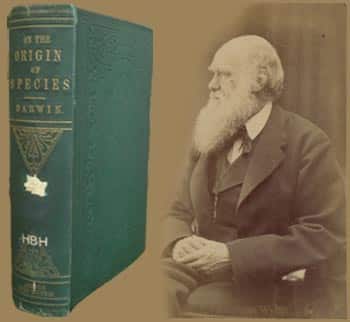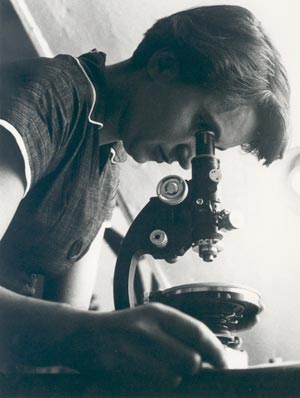By Mahin Hassibi
For the past century and a half, every new discovery of biology has left intact, and even crystallized, the myth of women’s inferiority. Now, galloping developments in biotechnology may alter this age-old script.
Still, the possibilities for manipulation of genes and genetic engineering are taking place with little or no public attention to the potential consequences in the male-female equation. The future they portent could be truly revolutionary.

Origin of Bias
The pattern of past biological bias emerges even from the groundbreaking work of Charles Darwin. While he delivered innovative analyses that shifted the understanding of plant and animal evolution, in his next stage, Darwin managed to reinforce entrenched cultural attitudes that females are subservient to males.
Initially, the publication of Darwin’s Origin of Species in 1859 introduced the revolutionary concept of evolution by natural selection into the scientific stream of the western thought. Opposition was based largely on the glaring disagreement between Darwin’s conclusions and the biblical story of creation. But for the younger generation of his day, Darwin’s observations and methodology led logically to his results and, as such, were not refutable.
Darwin’s next important work, published in 1871, took a sharp turn when it came to women. In Descent of Man, and Selection In Relation To Sex, Darwin concludes, “Males are more evolutionarily advanced than females.” This determination not only reinforced the belief about the inferiority of women during the 19th century, but has remained the underpinning of attitudes about women today.
In the second work, Darwin does not consider cultural, social, economic or historical factors when discussing the real or imaginary distinctions between men and women, although in the theory of natural selection, environmental factors are of prime importance in determining which organism survives to reproduce. Darwin concludes, instead, that sexual selection favors weaker women with a smaller volume of brain which, to his thinking, indicates lower intelligence than men, while manly pursuits such as war and hunting have helped to weed out the weaker men and maintain those fittest to survive. Consequently, for women, the aim of evolution and natural selection was no longer “survival of the fit,” but the survival of what best served men’s interests.
Darwin himself was exhibit A. At the age of 37, he wrote in a letter to his wife: “MY DEAREST OLD MAMMY. WITHOUT YOU, WHEN SICK I FEEL MOST DESOLATE, OH MAMMY I DO LONG TO BE WITH YOU AND UNDER YOUR PROTECTION FOR THEN I FEEL SAFE.…”
Codified in the myth of “Penis Envy”
Sigmund Freud, following in the decades after, hoped to construct his theories of psychology on the solid basis of biology and accepted the Darwinian ideas about women.
Darwin held that “unchecked female militancy” posed a real danger to civilization, and “the orderly process of evolution.” Freud believed that “penis envy” explained much about female psychology and that the “castrating woman” threatened the social order.
One hundred years post-Darwin, the second revolution in biology resulted in the discovery of double helix of the DNA in 1953. Yet nothing had changed in the science and scientists’ attitudes toward women.
Dr. Rosalind E. Franklin, an x-ray crystallographer, chemist and molecular biologist, worked on the structure of the DNA. Her male contemporaries relied upon their observations of her meticulous 3D-photography of the DNA molecule and subsequently received the Nobel Prize for the discovery. They not only appropriated her work and failed to credit her, but denigrated her as a woman who was unsuccessful in “her feminine qualities,” criticizing her dress, hair, makeup and apparent lack of interest in appealing to men.
Sociobiology and evolutionary psychology are the more recent theoretical offspring of evolutionary theory. So far, these fields have managed to disclaim only the generalized statement of women’s lower intellectual endowment, and little else. Much time and money is spent trying to map the attributes of the brain of “Man The Hunter” and address its various counter arguments, as opposed to what is considered to be the less challenging talents of “Woman the Gatherer.” And substantial space is given discussing the possible biological causes of the smaller number of women in academic jobs monopolized by men or in the power positions denied women by the male network.
Laboratories Leap Ahead
In the meantime, the pace of biology is accelerating. In laboratories, scientists are rapidly mapping the genomes of many animals and plants, as well as humans.
Research into DNA and all its many components has become so numerous, so mysterious and fascinating, that identifying all of the elements, functions and possible manipulation of their activities requires the collective effort of many academic centers. The Encode Project was established as a reservoir of the biological microcosm. The Encyclopedia of Life promises to document information about the 1.8 million species known on the planet.
For the first time, it seems, biology may develop concrete information about the differences between male and female physiology. Science may determine the type and functions of specifically female genes, their pathogenesis and differential treatments of their diseases.
The influence of biotechnology on human reproduction will have profound consequences for women, and for the species as a whole. As of today, the production of children remains dependent on germinal cells from men and women. The fetus requires the intrauterine environment to grow. In short, men are dependent on women for reproduction.
The future may not look the same. The possibility of an external incubator for the fetus changes the equation. Asexual reproduction or cloning of the human fetus from non-germinal cells is, at this point, at least theoretically possible and may have occurred in some laboratories. Such fetuses currently need to be placed in what is called a “rented uterus” — thus, the need for a woman to carry the baby.
However, advances in providing a nutrient environment for the fertilized eggs or cloned babies, or exogenesis, may, in the not very-distant-future, make the reproduction of all or the elite members of the society independent of men and especially women. One may wonder whether in such a brave new world, the desire for “organic babies” will make The Handmaid’s Tale into a real possibility.
Or, men may not need women to serve their needs at all. It is possible that when men do not feel the asymmetrical dependence on women for reproduction, their insistence on inferiority of women will disappear. Biology may, at last, change the destiny of women and turn Darwin on his head.
Mahin Hassibi is a Professor of Clinical Psychiatry (Ret.) at New York Medical College.
See also by Mahin Hassibi: Terror for Women Exists Throughout History, Across Cultures in “What Is Terror for Women” and Let’s Change The Equation on Sex and Earning in Sex Work and Prostitution.
Also see: Revolution Lite by Merle Hoffman from this edition of On The Issues Magazine.

